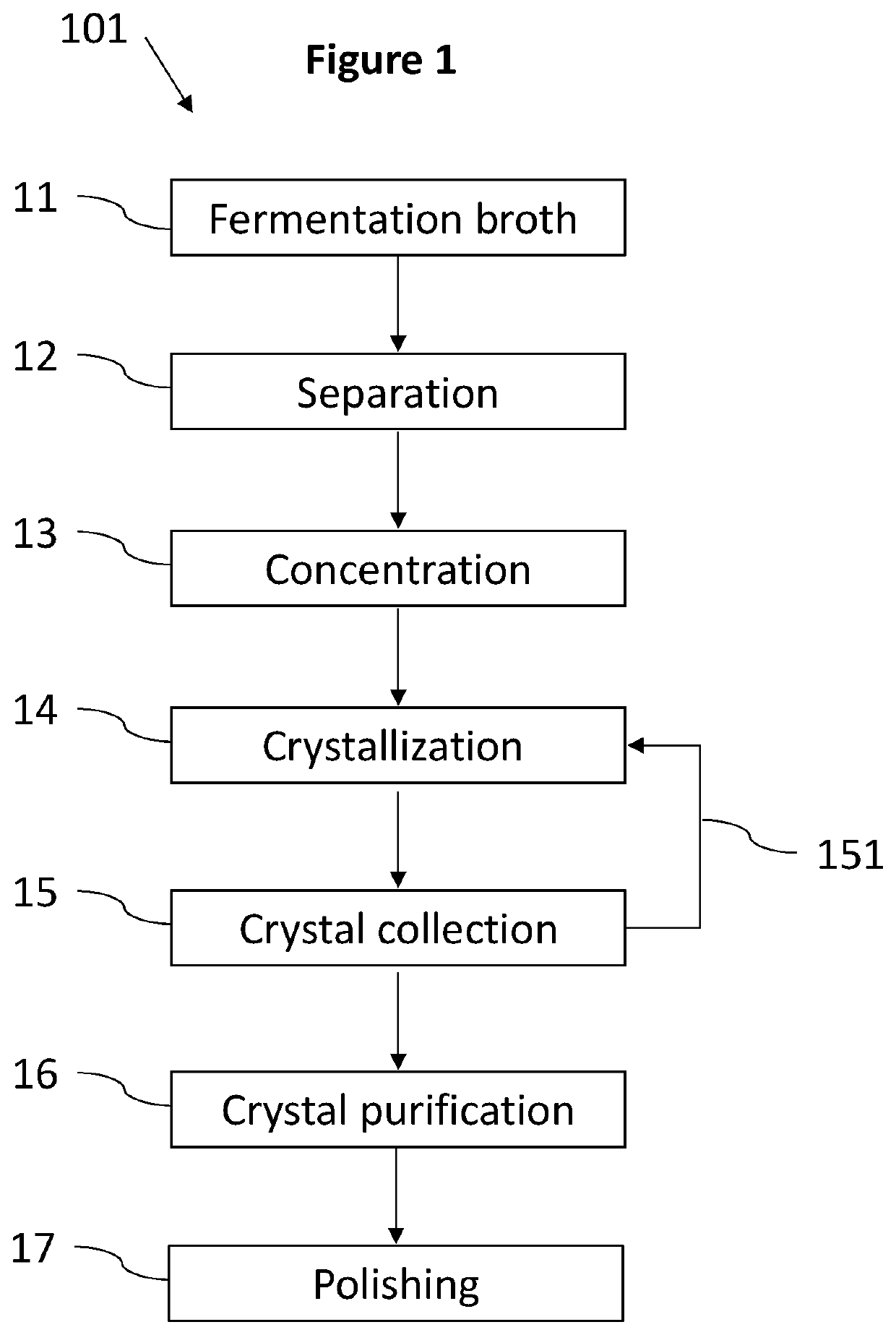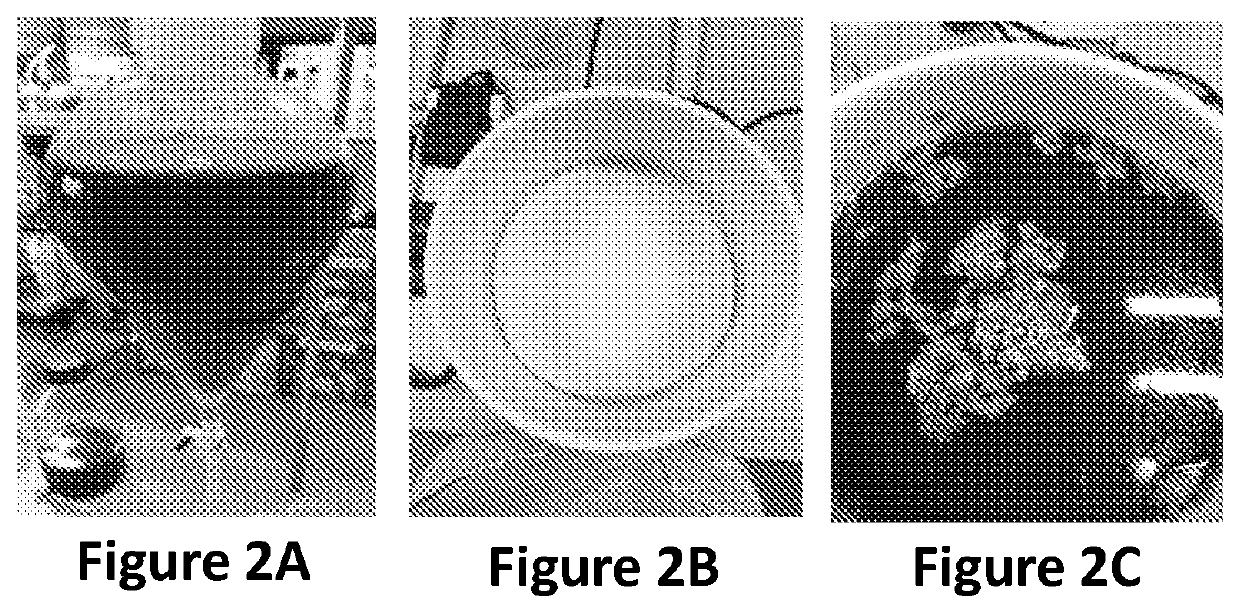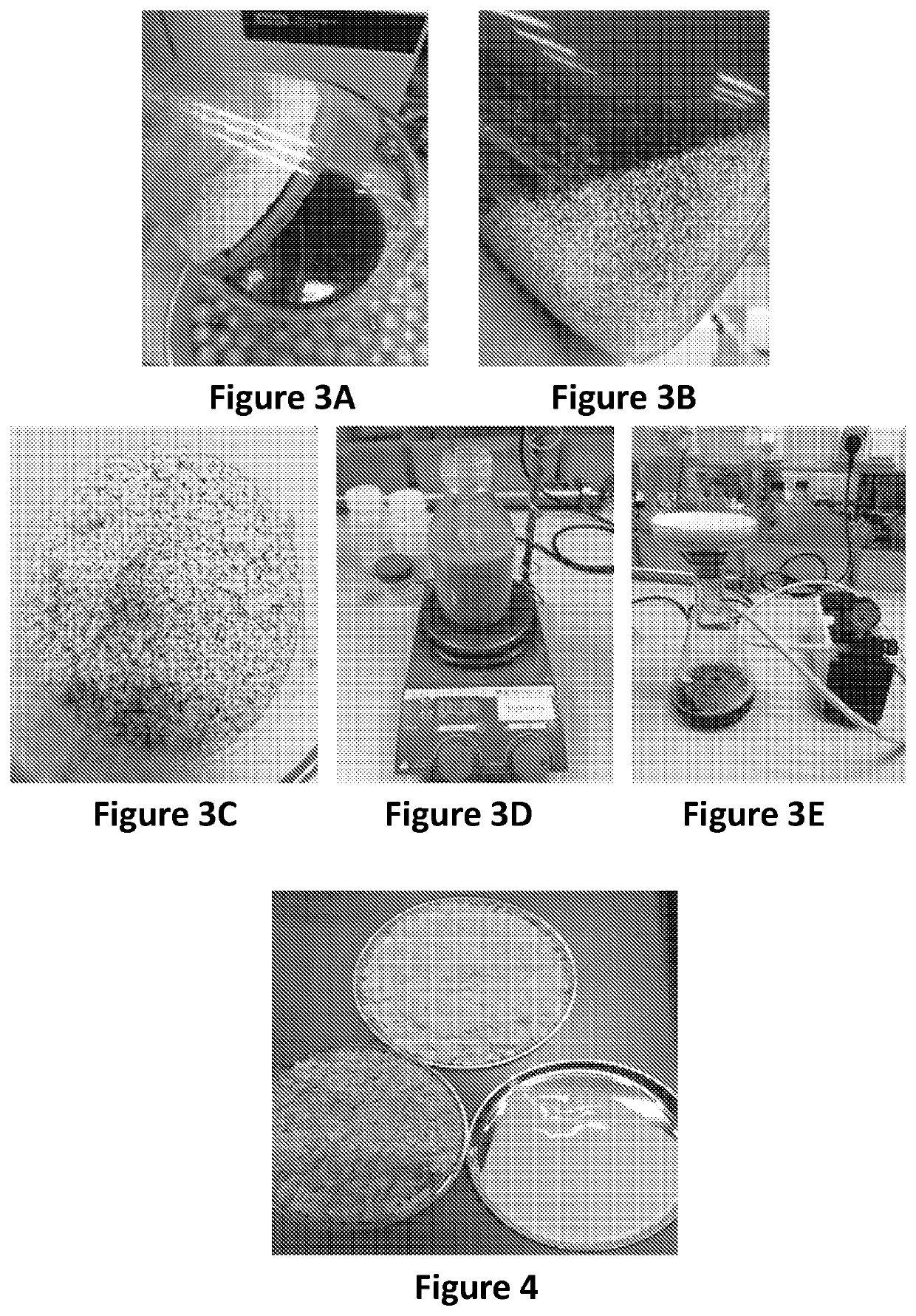Purification of magnesium lactate from fermentation broths having high amounts of impurities
- Summary
- Abstract
- Description
- Claims
- Application Information
AI Technical Summary
Benefits of technology
Problems solved by technology
Method used
Image
Examples
example 1
f Insoluble Impurities and Microfiltration
[0126]The purpose of this step is to separate insoluble impurities from the fermentation broth, in order to diminish the possibility of fouling in further downstream processing steps.
[0127]Two magnesium lactate containing fermentation broths (termed B2 and B3) were used for all of the following examples, containing different initial concentrations of lactate (Table 1 herein below). Both broths originated from commercial food waste, combining source-separated food waste from restaurants and factory rejects from bakeries. Said commercial food waste was shredded, thermally treated and underwent fermentation utilizing lactic acid—producing microorganisms. Following fermentation, each broth contained magnesium lactate, insoluble organic-based impurities, insoluble inorganic-based impurities and soluble impurities.
[0128]The broths contained about 20 wt % of insoluble impurities. The insoluble organic—and inorganic-based impurities contained partic...
example 2
tion
[0136]The purpose of this step is to concentrate the clarified broth obtained following separation of insoluble impurities.
[0137]The clarified B2 and B3 obtained in Example 1 were concentrated to 220 g / L and 175.9 g / L of lactate, respectively.
[0138]Concentration was carried out by evaporation. The evaporation was performed at a temperature of about 60° C. utilizing a rotary evaporator (Rotavapor® R-100, Büchi). It is also possible to perform the concentration step in the crystallization vessel.
[0139]When an evaporation temperature of 80° C. was attempted, the magnesium lactate crystals obtained following crystallization were not in the preferred polymorphic form of densely packed crystals.
[0140]Without wishing to be bound by any theory or mechanism, it is contemplated that concentrated broths have better yields during crystallization. Since magnesium lactate has a solubility of 100 g / L at 20° C. (SDS of magnesium lactate, Jost Chemicals), a significant mass loss can occur in the...
example 3
zation Process for Magnesium Lactate (B2)—Comparative Example
[0143]Several crystallization experiments of the concentrated clarified B2 obtained in Example 2 were performed. Experiments were performed in a 500 and 2000 mL Radleys Reactor-Ready™ lab reactors, and the temperature was controlled by using a Huber Petit Fleur Thermostat.
[0144]As noted in Example 2 above, evaporation is necessary to improve the crystallization yield, in order to reduce the amount of the mother liquor which can dissolve the obtained crystals. During evaporation, precipitation of magnesium lactate on the sides of the flask is visible (FIG. 3A).
[0145]The concentrated clarified B2 obtained in Example 2 contained 220 g / L of lactate. The pH of the concentrated clarified B2 was about 7. This concentrated clarified broth was subjected to crystallization by two methods as described in the following sections.
First Method
[0146]After evaporation, a first method was used for the crystallization of magnesium lactate:[0...
PUM
| Property | Measurement | Unit |
|---|---|---|
| Temperature | aaaaa | aaaaa |
| Temperature | aaaaa | aaaaa |
| Temperature | aaaaa | aaaaa |
Abstract
Description
Claims
Application Information
 Login to View More
Login to View More - R&D
- Intellectual Property
- Life Sciences
- Materials
- Tech Scout
- Unparalleled Data Quality
- Higher Quality Content
- 60% Fewer Hallucinations
Browse by: Latest US Patents, China's latest patents, Technical Efficacy Thesaurus, Application Domain, Technology Topic, Popular Technical Reports.
© 2025 PatSnap. All rights reserved.Legal|Privacy policy|Modern Slavery Act Transparency Statement|Sitemap|About US| Contact US: help@patsnap.com



